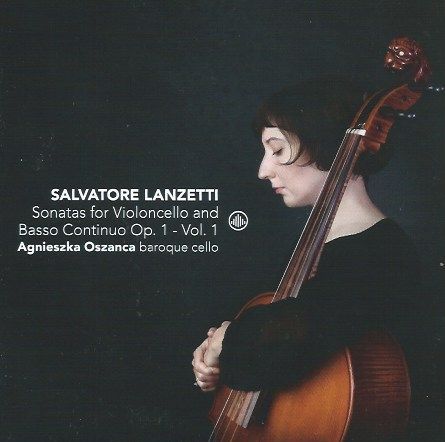The stunning world of Salvatore Lanzetti
Unforgettable Baroque music delivered with consummate artistry

This is a gem of a disc: 69 minutes of pure bliss.
Born in Naples around 1710, the cellist/composer Salvatore Lanzetti enjoyed engagements in Lucca (where he worked with Veracini) and Turin before embarking on a solo cello career that took him to both Paris and London - it is possible that between 1730 and 1754 he spent a lot of time in London city. He died in 1780.
Lanzetti's Op. 1 Sonatas were published in 1736 in Amsterdam, and dedicated to Federico di Brunswick. While much has been made of the virtuosity required by his cellist, it was the music itself that drew me in immediately. The sonic richness of the continuo group in this recording - comprising another cello (Maria Misiarz), harpsichord (Fabio Bonizzoni) and theorbo (Gabriele Palomba) - adds immeasurably to the soundworld.
Here is the cellist on today's recording, Agnieszka Oszanca, introducing the pieces:
The sheer diversity on this disc is remarkable, revealing both French and Italian influences; as is Oszanca's ability to pinpoint the changing shades of the music.
Here's a fine example: the heartfelt Adagio first movement of the A minor Sonata, No. 9 (but the first one we hear on this disc itself). The video begins with the cellist running towards her cello in idyllic countryside surroundings before performing in front of a fireplace:
Although all of the six sonatas included here are cast in three movements, the diverity is stunning. Given that Oszanca's technique is such that the technical challenges are consistently vanquished, the ear is able to focus on the beauty of the music itself. The expressivity of this music is remarkable - try the Adagio of No. 1 when you get the disc home, its florid surface the perfect foil for the bright Rondeau finale. Or the impossibly expressive melancholy of the first movement Andante of the A major, No. 2; or the first movement of the B flat (No. 6), full of stoppings and challenges that here enable the music to buzz with life; or the light touch of the gallant Gavotte that closes the sixth Sonata. The list just goes on ...
Lanzetti's achievement on paper might be extending the technique of the cello to include aspects previously held only in the realm of the violin. But it is the melding of these with music of the very highest standard that makes his output special; the spring to the step of the first movement of the Sonata No. 11 in the face of a barrage of stopping seems the perfect example.
The recording is perfect, and it's not often I say that. Oszanca plays on a copy of an Italian Baroque cello made especially for her in 2017 by Jan Bobek.
The recording, on Challenge Classics, is labelled Volume One; we eagerly await more. Although there are alternative recordings (Claudio Ronco has recorded the full set twice, once with continuo and once with the company of only another cellist, the first time on Nuovo Era, the second on Urania), I for one am content to hang around for Oszanca and her perfect resonance with this gorgeous music.
